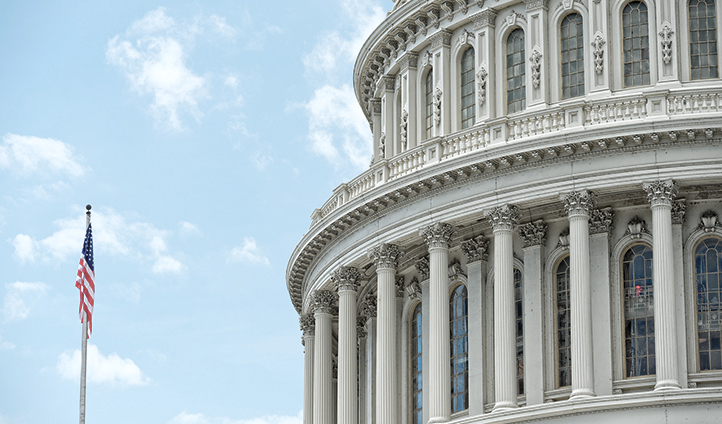Myers v United States Holds President Can Remove Executive Branch Officials
Historical
In Myers v United States, 272 U.S. 52 (1926), the U.S. Supreme Court held that, under the Constitution, the President has the exclusive power to remove executive officers of the United States whom he has appointed by and with the advice and consent of the Senate.
Facts of Myers v United States
In 1920, President Woodrow Wilson removed U.S. Postmaster Frank S. Myers from office. President Wilson did not obtain the approval of the United States Senate prior to removing Myers from office. Accordingly, Myers argued that his removal violated an 1876 law, which provided:
Postmasters of the first, second and third classes shall be appointed and may be removed by the President by and with the advice and consent of the Senate and shall hold their offices for four years unless sooner removed or suspended according to law.
Myers filed suit in the Court of Claims seeking to recover his salary since removal. The claims court rejected Myers’ suit after concluding that he waited too long after his removal to file suit.
Supreme Court’s Decision in Myers v United States
By a vote of 6-3, the Supreme Court held that the power to remove appointed officials rests solely with the president. Chief Justice William H. Taft wrote on behalf of the majority.
In interpreting the reach of the President’s removal power, the majority acknowledged that it is not expressly addressed in the U.S. Constitution. Accordingly, it looked to the First Congress in 1789. As Chief Justice Taft explained:
Upon a historical examination of the subject, the Court finds that the action of the First Congress, in 1789, touching the Bill to establish a Department of Foreign Affairs, was a clean-cut and deliberate construction of the Constitution as vesting in the President alone the power to remove officers, inferior as well as superior, appointed by him with the consent of the Senate; that this construction was acquiesced in by all branches of the Government for 73 years, and that subsequent attempts of Congress, through the Tenure of Office Act of March 2, 1867, and other acts of that period, to reverse the construction of 1789 by subjecting the President’s power to remove executive officers appointed by him and confirmed by the Senate to the control of the Senate or lodge such power elsewhere in the Government were not acquiesced in, but their validity was denied by the Executive whenever any real issue over it arose.
The majority went on to conclude that not allowing the President to remove appointed officials would prevent the President from fulfilling his executive duty to ensure the faithful execution of the law. According to the majority, the President “should select those who were to act for him under his direction in the execution of the laws.” The Chief Justice added that “as his selection of administrative officers is essential to the execution of the laws by him, so must be his power of removing those for whom he can not continue to be responsible…”
Dissent in Myers v United States
Justices Louis Brandeis, James Clark McReynolds, and Oliver Wendell Holmes authored dissenting opinions. In his dissent, Justice Brandeis cited one of Court’s seminal decisions. “InMarbury v. Madison, it was assumed, as the basis of the decision, that the President, acting alone, is powerless to remove an inferior civil officer appointed for a fixed term with the consent of the Senate, and that case was long regarded as so deciding,” he wrote.
Previous Articles
Supreme Court Rejects Moment of Threat Doctrine in Deadly Force Case
by DONALD SCARINCI on June 30, 2025
In Barnes v. Felix, 605 U.S. ____ (2025), the U.S. Supreme Court rejected the Fifth Circuit Court o...
SCOTUS Holds Wire Fraud Statute Doesn’t Require Proof Victim Suffered Economic Loss
by DONALD SCARINCI on June 24, 2025
In Kousisis v. United States, 605 U.S. ____ (2025), the U.S. Supreme Court held that a defendant wh...
SCOTUS Holds Wire Fraud Statute Doesn’t Require Proof Victim Suffered Economic Loss
by DONALD SCARINCI on June 17, 2025
In Kousisis v. United States, 605 U.S. ____ (2025), the U.S. Supreme Court held that a defendant wh...
The Amendments
-
Amendment1
- Establishment ClauseFree Exercise Clause
- Freedom of Speech
- Freedoms of Press
- Freedom of Assembly, and Petitition
-
Amendment2
- The Right to Bear Arms
-
Amendment4
- Unreasonable Searches and Seizures
-
Amendment5
- Due Process
- Eminent Domain
- Rights of Criminal Defendants
Preamble to the Bill of Rights
Congress of the United States begun and held at the City of New-York, on Wednesday the fourth of March, one thousand seven hundred and eighty nine.
THE Conventions of a number of the States, having at the time of their adopting the Constitution, expressed a desire, in order to prevent misconstruction or abuse of its powers, that further declaratory and restrictive clauses should be added: And as extending the ground of public confidence in the Government, will best ensure the beneficent ends of its institution.





